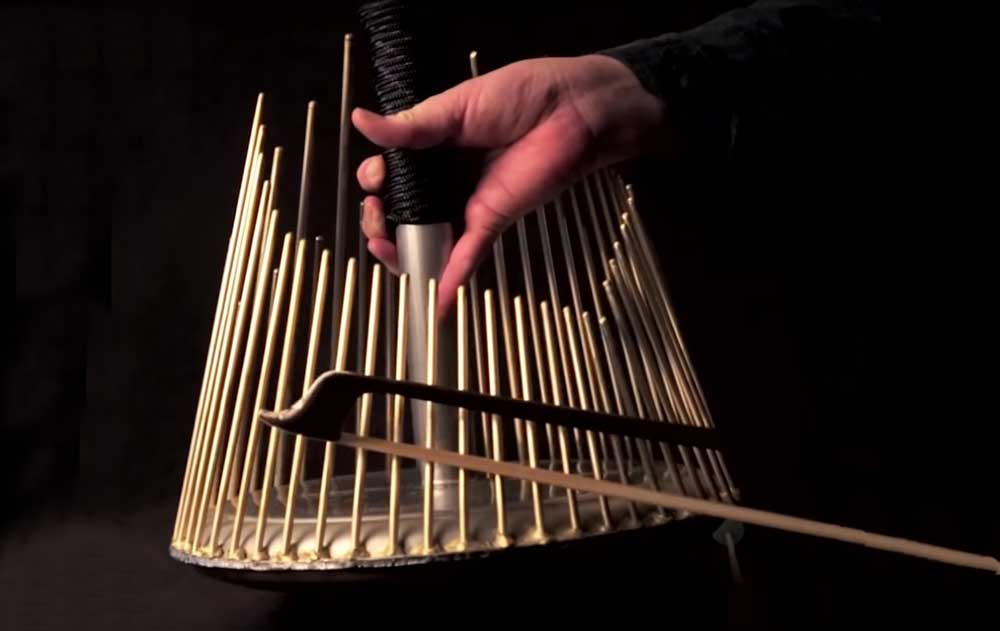
The Waterphone has been used to great effect for film and TV scores. (Photo courtesy Waters-Hubbert)
The waterphone produces an ethereal sound, like an unearthly harp. Invented in the late 1960s by Richard Waters, it is also known as an ocean harp. The custom-made instruments have garnered an enthusiastic following of film and TV composers, as well as a couple of pop stars (Tom Waits and Miles Davis are listed on the waterphone company website).
Described as an “inharmonic acoustic percussion instrument,” it is built of bronze rods of different lengths and diameters, positioned around the rim of a stainless steel resonator pan with a cylindrical neck. The resonator may contain a small amount of water giving the waterphone a vibrant resonance when played with a box.
“It’s one of my favorite instruments in the world,” said composer David Cieri, who used it on the Ken Burns documentary The Vietnam War. “Richard Waters was a motorcycle mechanic, and he noticed one day that when he moved his motorcycle around with an almost empty tank of gas, it produced a very unusual sound.” Waters, who died in 2013, cited as influence the Tibetan drum and Kalimba (or African thumb piano).
Waterphones have also been used on film and TV sound tracks including Poltergeist, Star Trek, Bugsy, Young Guns, The Invasion of the Body Snatchers, Truman, The Matrix, The Shadow Conspiracy and Crouching Tiger, Hidden Dragon in addition to TV shows 24, The Mentalist, and many others.
Documenting the creation of his device, Waters wrote about how he began by soldering pipes into soda cans. “I took one of these to my friend, Lee Charlton, a jazz drummer and in his studio we put a small amount of water into the resonator of one of these and applied a well rosined bow to the rods on this device. This was the first Waterphone which Lee still has in Sant Rosa, California. I immediately began working on the patent process which turned out to be a long and expensive road.”
Waters grew up on the Mississippi Gulf Coast. He graduated from the University of Southern Mississippi in 196, and in 1965, received his MFA from the California College of the Arts. Since his passing the custodianship of creating the instruments has been handed off to one of his colleagues, Brooks Hubbert.


Comments are closed.